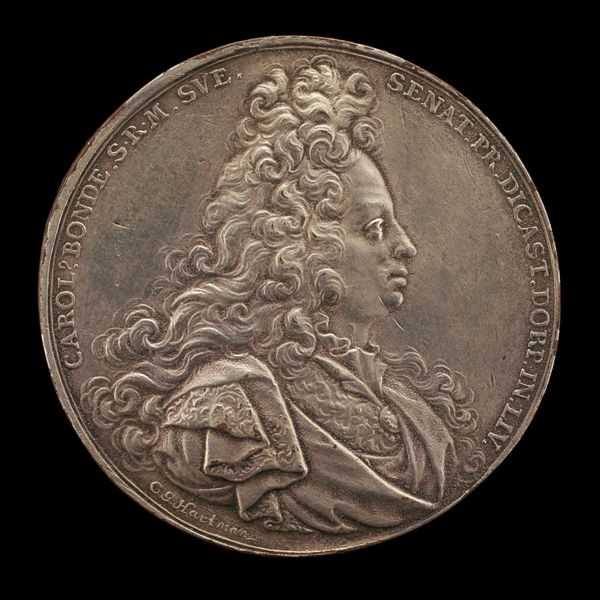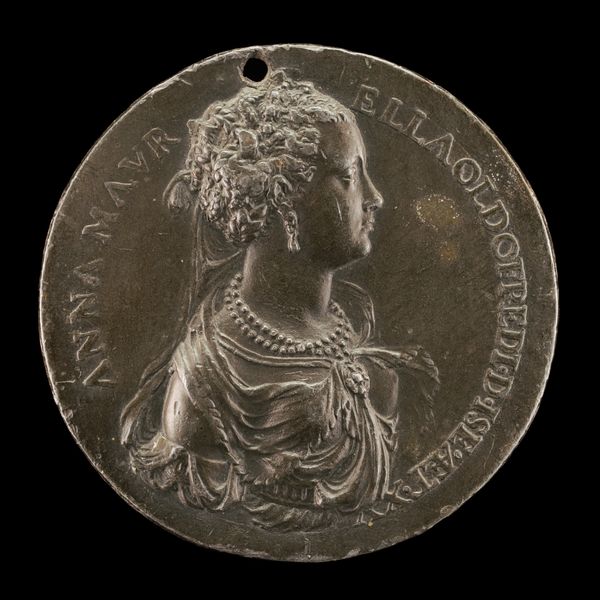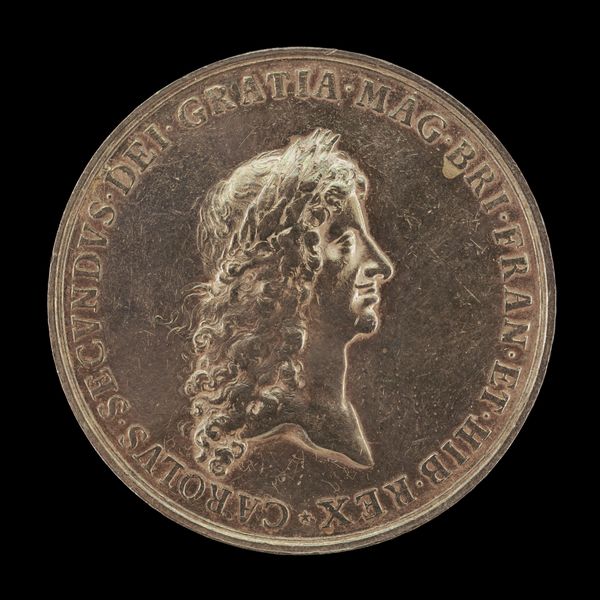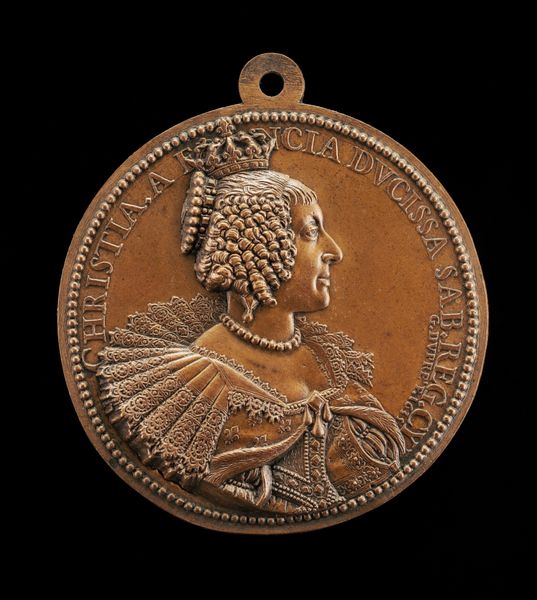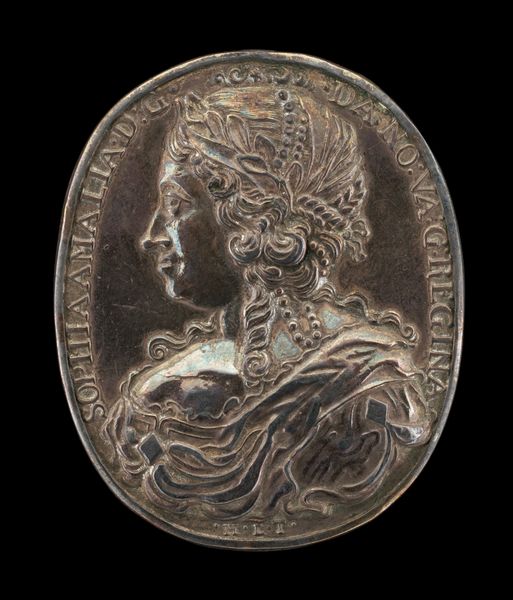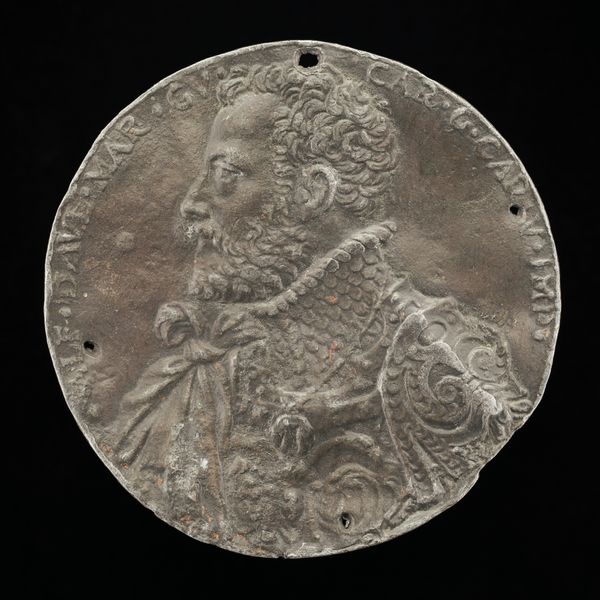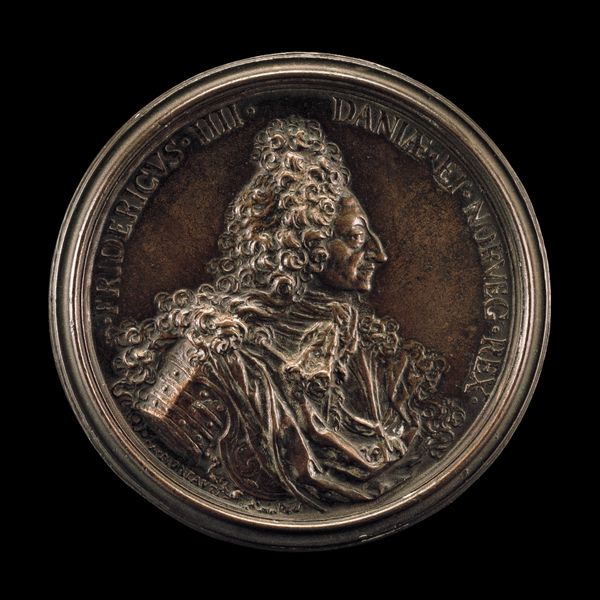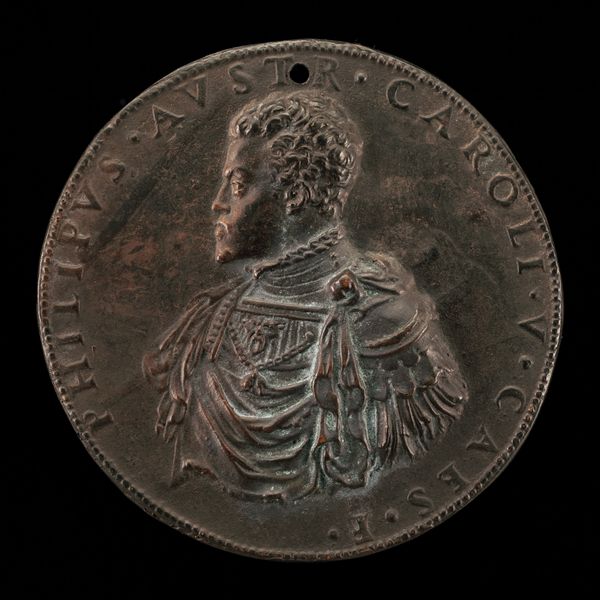![Joseph I, 1678-1711, Holy Roman Emperor 1705 [obverse] by Johann Georg Seidlitz](/_next/image?url=https%3A%2F%2Fd2w8kbdekdi1gv.cloudfront.net%2FeyJidWNrZXQiOiAiYXJ0ZXJhLWltYWdlcy1idWNrZXQiLCAia2V5IjogImFydHdvcmtzLzE3NDhkOGM0LTkxNDctNGUxNy1iOGE1LTZjY2UxYzNhYWNjYS8xNzQ4ZDhjNC05MTQ3LTRlMTctYjhhNS02Y2NlMWMzYWFjY2FfZnVsbC5qcGciLCAiZWRpdHMiOiB7InJlc2l6ZSI6IHsid2lkdGgiOiAxOTIwLCAiaGVpZ2h0IjogMTkyMCwgImZpdCI6ICJpbnNpZGUifX19&w=3840&q=75)
Joseph I, 1678-1711, Holy Roman Emperor 1705 [obverse] 1705
0:00
0:00
metal, relief, sculpture
#
portrait
#
baroque
#
metal
#
stone
#
sculpture
#
relief
#
sculpture
#
history-painting
Dimensions: overall (diameter): 5.85 cm (2 5/16 in.) gross weight: 68.75 gr (0.152 lb.) axis: 12:00
Copyright: National Gallery of Art: CC0 1.0
Editor: Here we have a metal relief sculpture of Joseph I, Holy Roman Emperor, dating back to 1705, created by Johann Georg Seidlitz. The detail in the Baroque style is striking. How do you interpret the composition of this piece? Curator: Formally, the composition relies on a stark contrast between the smooth, unadorned background and the elaborate detail of the emperor's portrait. Note how the artist used relief to create depth and texture, particularly in the rendering of the hair and the ornate detailing of his clothing. Editor: So the contrast is deliberate. I hadn't thought about how that directs the eye. Is the circular format significant? Curator: The circular form, typical of medals, imposes a compositional constraint. Seidlitz skillfully uses this limitation to emphasize the emperor’s profile, creating a self-contained image of power. The inscription acts as a border, further defining the space. Editor: That's interesting, making the inscription part of the artistic construction. The looping text is a great guide. What’s your take on the material? Curator: The choice of metal, likely silver or pewter, speaks to the desire for permanence and the symbolic weight of the subject. Consider how light would play across the surface, accentuating the contours and adding to its visual richness. The reflective quality elevates it, and would make a viewer take pause to examine their relation to it. Editor: I see it! That emphasis makes a lot of sense. This deeper analysis changes my whole understanding of the artwork. Thanks! Curator: My pleasure. Looking closely at how the formal elements interact reveals so much about the artist's intent and the power dynamics at play.
Comments
No comments
Be the first to comment and join the conversation on the ultimate creative platform.
